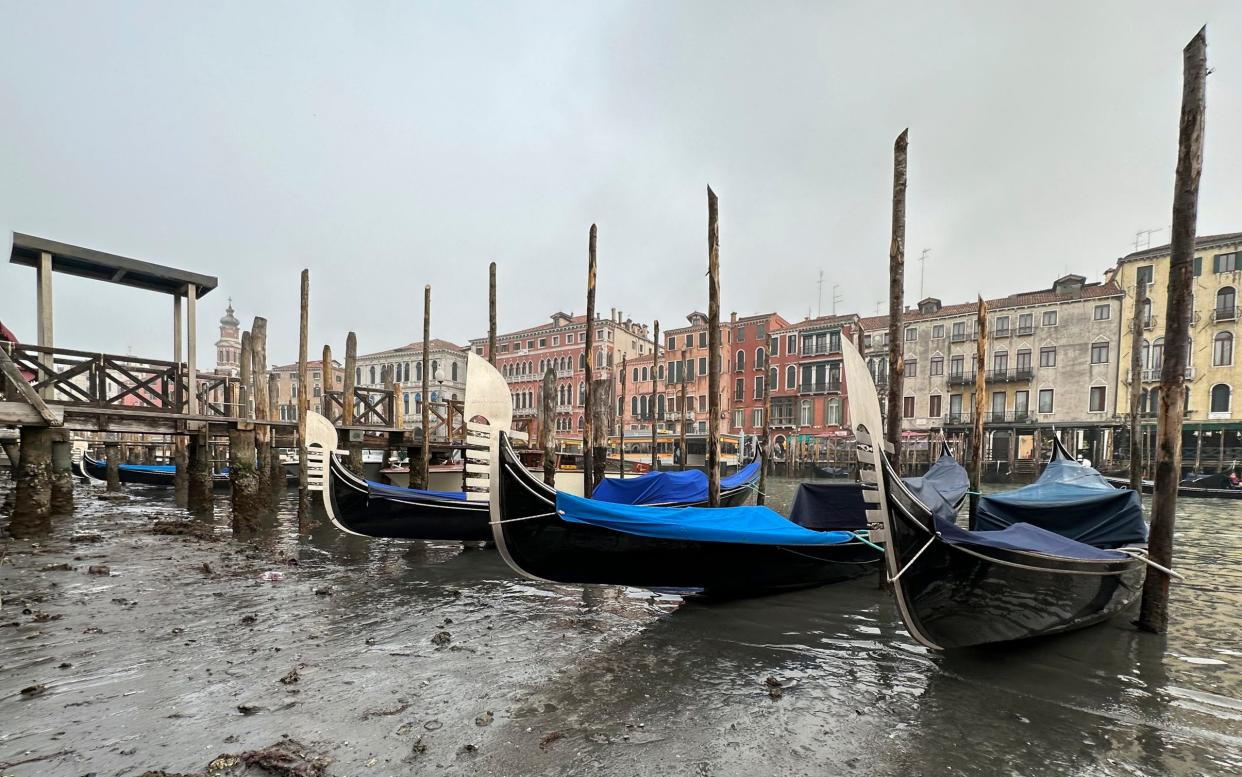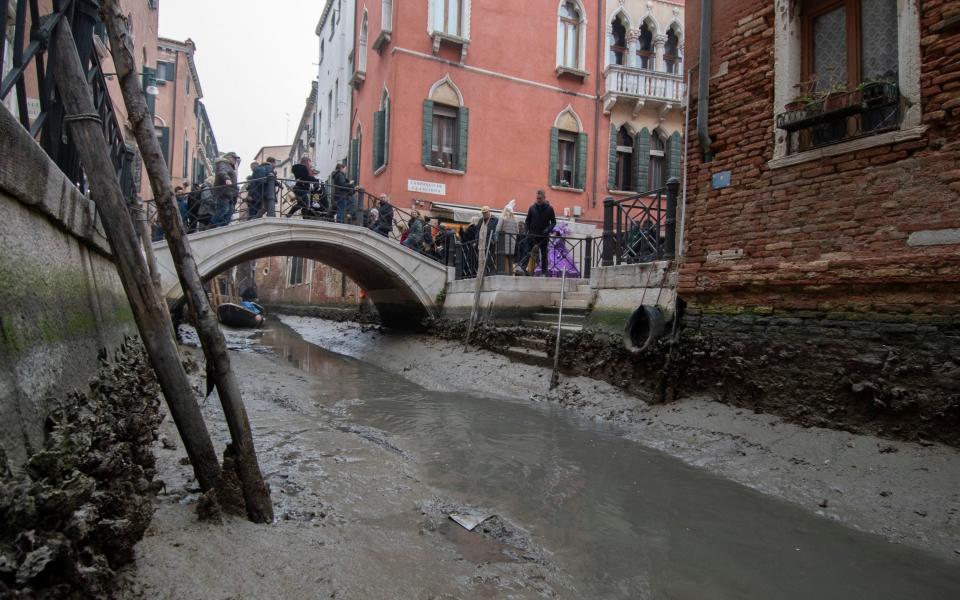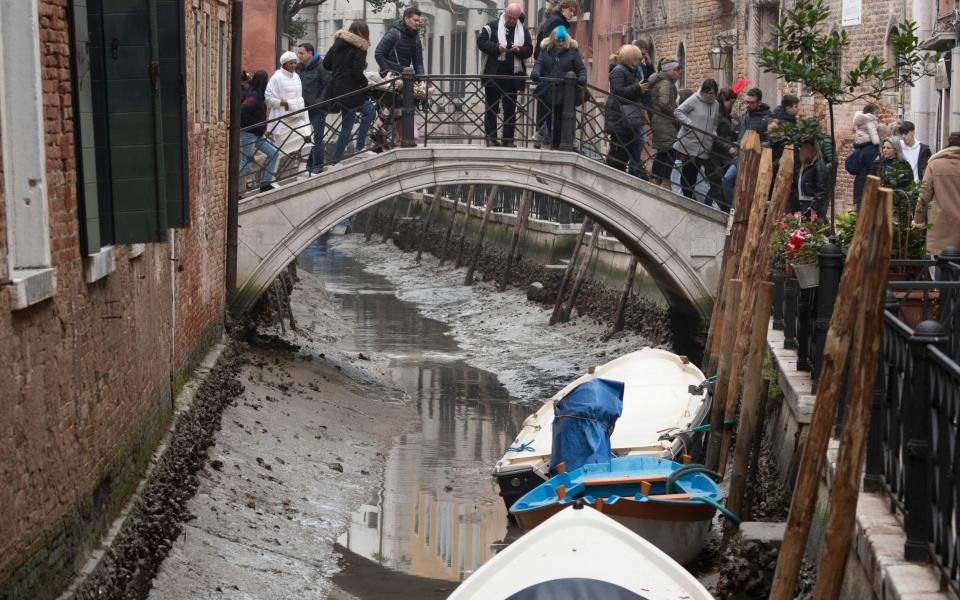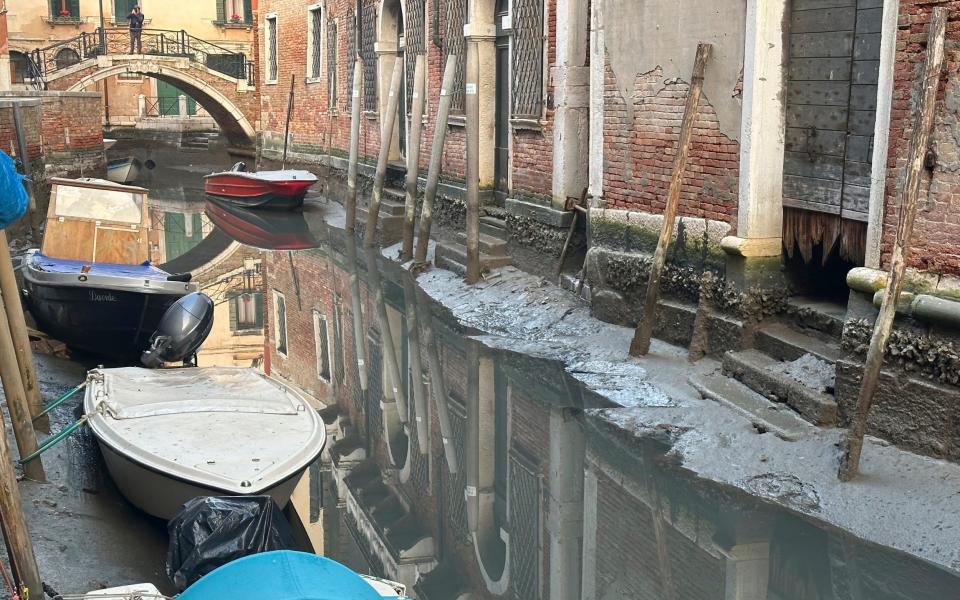Venice’s empty canals reveal something about the city’s future – but it’s not what you think

The half a million-odd visitors who piled into Venice for pre-Lent Carnevale celebrations last week were met with an unusual sight: its picturesque canals reduced to a muddy trickle. With such a backdrop, the festival – with its magnificently costumed revellers – lost a little of its lustre.
As gorgeous as it is, the lagoon city has its share of problems. Cruise ships have long blighted the views, though the largest of the vessels which used to saunter past St Mark’s Square, dwarfing the city and damaging the delicate ecosystem of the lagoon bed, have been banished to more distant waters.
Tourist hordes continue to turn narrow calli into unpassable channels. And the risk of finding yourself up to your ankles in overflowing canal water is still an integral part of the autumn acqua alta season.
Extreme low tides, on the other hand, are altogether less expected.

Empty canals? What’s that about?
Northern Italy is experiencing a serious drought but that, according to experts, had little bearing on last week’s bassa marea (low tide) in Venice. The culprit here was extreme high pressure, coupled with the strong gravitational pull of the new moon which on February 18 reached its perigee – as close to the earth as it comes.
The exposed mud caught the world’s attention, largely because visitors were back in their droves for the first proper Carnevale since Covid and all eyes were on the revelries. The low levels made water-borne deliveries more difficult, with concerns raised about getting boat-ambulances and boat-fire engines to emergencies.

Venetians, however, were quick to point out that extreme low tides (which means anything more than 50cm below average levels) are not uncommon.
On February 20 the level sank to minus 70cm – low, yes, but not a patch on the minus 83cm seen in 2008 or the minus 92cm registered in February 1989. In fact, since records began in 1872 there have been 160 incidents in which water levels have dropped beneath minus 90cm. It definitely isn’t new.
Are low tides becoming more common?
In a word, no. A glance at data from Venice’s Tide Forecast and Warning centre shows that the bassa marea has been in sharp decline for many years. On the one hand this is welcome: waterless canals are not pretty and the exposed mud can be unpleasantly smelly. But it’s not necessarily comforting.

If the canal beds are exposed less often it’s because the city is subject to subsidence and because water levels around the globe are rising, thanks to climate change. The sea level in Venice is now a massive 32cm higher than it was in 1897. What was once a totally normal part of the annual cycle is fast disappearing.
What does bassa marea change for the visitor?
Bassa marea – low tide – is just that: a tide. For an hour or two, a couple of times a day, water drops below normal levels in particular parts of the city. (The same, incidentally, applies to acqua alta: the water that ‘floods’ Venice ebbs and flows, for short periods, to depths which depend on the pavement height of any given part of the city.)

Disgruntled gondoliers in one busy passenger pick-up stop near St Mark’s Square were forced to paddle their craft elsewhere or risk being grounded when the tide dropped. And some areas, most notably around the Rialto, were no longer praticable for boats.
Even along the Grand Canal, swathes of seaweed-clad wall were exposed low down on the palazzi lining the splendid waterway. Along smaller canals, the low tide offered a chance to study the fascinating nuts and bolts of the city – the foundations and infrastructure which are usually submerged.
So is acqua alta the bigger worry?
In the record-breaking high water of November 2019, the lagoon rose to 189cm above its zero point level, wreaking havoc in a tourism-dependent city. But now the city has a new defence at its disposal.
Few people held out much hope for the Mose system of mobile flood barriers at the entrances to the lagoon. Seventeen years of stalled construction, soaring costs and judicial woes had left Venice with what many suspected was a white elephant.

But in October 2020 the barrages creaked into action for the first time, keeping the tide out of the centro storico. Final vindication came in November 2022 when the much-maligned barriers held back a tide of 173cm: the third-highest ever registered, high enough to flood even tide-resistant parts of the city.
The threat hasn’t gone away. The Mose barriers cost so much to raise that they only crank into action for the most threatening events, so if you’re in Venice in the acqua alta season in autumn or early winter, there’s still a chance you’ll witness the bizarre sight of water bubbling up from beneath the city’s pavements. Furthermore, sea levels are still rising, and the maintenance so desperately needed by the barriers is lagging badly behind.
And what of Venice’s other problems, like overtourism?
There seems to be no quick fix for the problem of overcrowding in this tiny city of fewer than 50,000 residents, visited by an estimated 23 million people annually. Proposals for a limited number of day-trip visitors paying a fee to pass through entrance turnstiles are floated – then postponed – with wearisome regularity. The gates that were expected to go up in early 2023 have now been mothballed until later in the year; Venetians, however, are not holding their breaths.
Read more: I visited the riotous Venetian festival where ‘anything goes’

